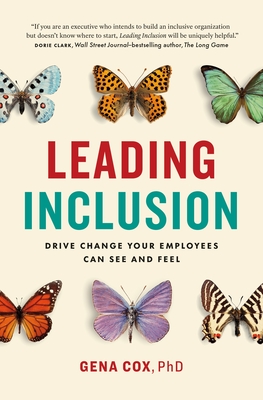Book Review: Leading Inclusion: Drive Change Your Employees Can See and Feel
Book Reviewed by Robert Fleming
In this book packed with practical business concepts and strategies, Gena Cox, an acclaimed organizational psychologist and executive coach, takes on several prickly issues plaguing the American workplace. Her book, Leading Inclusion, salutes human centered leadership while challenging the reader’s common beliefs and unconscious bias. Her message of the emotional and intellectual variety of humans is apparent throughout, but she concedes the goal of inclusion “remains elusive in the workplace.”
Cox’s Leading Inclusion spells out the massive cultural, political, and economic obstacles, dating back to the difficulties of slavery and Jim Crow where the American workplace was influenced. At first glimpse, the reader comprehends the pioneering directions of the text when the titles are read. “Part One: Skin In The Game;” “Part Two: Mindset: Rethink What You Believe;” “Part Three: Boldness: Make The Inclusion Scalable;” and “Part Four: Action: It Won’t Be easy, But It Can Be Done.” This is not just the average business book.
People who follow the mighty corporate world often see the failures as disappointing, feeling they have no recourse or options to right any wrongs. In the book, Cox repeatedly writes of people of color frustrated with low number of their race in corporate positions of power. She issues a plea to remedy this deficit by calling on the leaders to create effective institutional bias training for all company workers. To keep the promise of inclusion and diversity, she recommends the hiring of a Chief Diversity Officer or otherwise the goals will become unraveled. Many diversity hires, Cox notes, will be out the door shortly after starting, because of the negative work environment.
Cox’s labor truths are on target:
“If you don’t have that connection, you might not know what Black employees experience every day in the company you lead. You might be unaware of the trauma and pain your Black employees carry. Or that some of that trauma is being exacted and exacerbated by managers within your company. Finally, you might not know that Black employees need your help to function with ease rather than dread in your organization.”
Diversity, equity, and inclusion. The Cox formula to inclusion is simple, but the harsh reality of putting it into action can run into a series of challenges. She sees many of the energetic and creative leaders have their diversity efforts criticized, dismantled, or underappreciated. Often, the diversity and inclusion plans did not forecast the difficulties before fashioning effective solutions. When the world witnessed the George Floyd and Breonna Taylor killings, stakeholders, employees, and consumers wanted business leaders to confront the issues of racism and discrimination now rather than later. They also desired a long-term REDI (respect, equity, diversity and inclusion) plan as a remedy for a broken system that they could see and feel.
Cox explains the futility of the average employee of color with the status quo:
“The challenge is that, until now, the daily experience of Black American employee has been hidden, misunderstood, and underestimated. Black workers don’t usually talk to coworkers or managers about our experiences at work; it has never been safe to do so.”
As an experienced executive, Cox understands how the embrace of a REDI mindset demands authenticity, emotional resilience, self-assurance, inquisitiveness, and flexibility. She believe that this growth mindset also requires curiosity, connection, and comfort when interacting with people whose experiences differ from our own.
The author, who has endured many of the roadblocks in the book, encourages executives to throw off the traditional roles and be brave and bold when their counterparts of color stand up and voice their concerns. She notes that executives exist in a bubble where certain realities of worker experience may “obscured.” Executives, Cox says, must build a culture of psychological safety where employees can truly be heard.
In order for the REDI model to be successful, executives should communicate with their managers effectively. “The most powerful thing you can do is set the expectations for how you want your managers to behave, train them how to behave this way, and hold them accountable to these behaviors. Make your REDI leadership expectations transparent and required. And teach leaders and managers how to be change agents, too. Employees of all types will see the difference.”
With common sense and practical knowledge, the abundance of business wisdom and insight Cox brings to the task of building an inclusive work environment makes for a stimulating read. All in the business world, both executive and employee, can view this master class as a whole and profit from it. This is an intriguing collection of powerful and convincing arguments and remedies against the status quo in the workplace.

